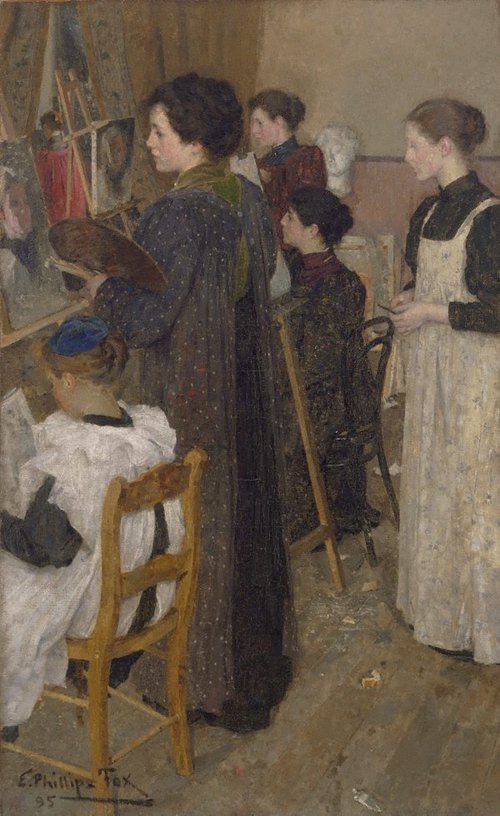E Phillips Fox
Australia, France
Born: Melbourne, Victoria, Australia 12 Mar 1865
Died: Melbourne, Victoria, Australia 08 Oct 1915
Biography
Emanuel Phillips Fox was an influential and internationally recognised painter in the impressionist style who contributed substantially to development of Australian plein air painting. Fox’s paintings are characterised by a commitment to direct visual experience; in Australia and Europe he painted and exhibited sun-drenched, vividly coloured landscapes and scenes of everyday life animated by textured paint handling.
Fox enrolled at the National Gallery School in Melbourne in 1878 under OR Campbell and Eugène von Guérard, and later George Frederick Folingsby. Deciding against studies at the University of Melbourne in order to continue his training as an artist, he qualified as a drawing teacher and taught at a number of suburban design schools while painting landscapes around Melbourne and in Gippsland. In 1887 he left Melbourne for Paris, where he studied at the Académie Julian under Tony Robert-Fleury and William-Adolphe Bougereau, and was subsequently admitted to the prestigious École des Beaux-Arts, where he received rigorous academic training under Jean-Léon Gérome. He developed an interest in the impressionist style studying under American expatriate Thomas Alexander Harrison, who had worked alongside the celebrated plein-air painter Jules Bastien-Lepage. Fox visited artists’ colonies and went on plein air painting excursions in Brittany, where he painted A French peasant 1889. He later joined the artist’s colony at St Ives in Cornwall. In 1891 he visited Madrid.
Fox returned to Melbourne in 1892 and with fellow plein-air painter Tudor St George Tucker, opened the Melbourne School of Art and conducted a summer school at ‘Charterisville’ in Heidelberg teaching the impressionist methods he had learnt in Europe. Fox became a major exponent of impressionism in Australia, which was influenced not by Monet and Pissarro, but by the plein air naturalism and rural subject matter of Bastien-Lepage and the ethereal tonal studies and bold compositions of James McNeill Whistler. In his landscapes, genre scenes and portraits, Fox focused on the play of light, atmosphere and vivid colour, composing strikingly informal pictures which were textured with sensuous paint handling.
Fox painted in Melbourne and the hills around Heidelberg c1895-1900 and continued to send paintings to Paris for exhibition in the Old and New Salons. He won a gold medal at the Old Salon in 1894, the first Australian-born artist to receive one. In 1900 Fox and John Longstaff were commissioned, as part of the Gilbee Bequest, to produce historical paintings on Australian national themes for the National Gallery of Victoria. Fox’s work, The landing of Captain Cook at Botany Bay, 1770 was completed in 1902. By 1904 Fox was once again living in Paris and the following year married the British artist Ethel Carrick. They travelled in Italy and Spain together before visiting Melbourne in 1908, where they exhibited their work.
Fox earned a considerable reputation both in Australia and in Europe. He was the first Australian-born full member of the Societe Nationale des Beaux-Arts in 1910 and in 1912 was elected to the International Society of Painters, Sculptors and Gravers in London. His teaching and paintings had a lasting influence on Australian art, especially on young modernists such as Roland Wakelin, who were inspired by works such as The ferry c1910-11.








